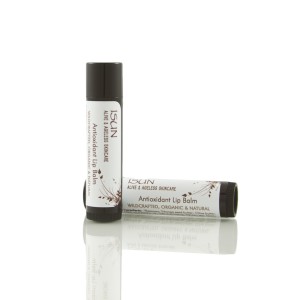SPF UVA UVB – What does it all mean?
It’s confusing out there with all the choices available on the shelves. Let’s take a closer look and clarify the difference.
What is SPF?
Sun Protection Factor
This refers mostly to protection against UVB rays & has little to do with protection from the sun’s UVA rays.
UVA vs UVB:
- UVA ( A ) = Aging
- UVB ( B ) = Burning
SPF 15 30 45
The SPF rating is a measure of the time it would take you to sunburn if you were not wearing sunscreen as opposed to the time it would take with sunscreen on.
- SPF 15 filters 94% of the UVB
- SPF 15 delays onset of sunburn in a person who would otherwise burn in 10 minutes to burn in 150 minutes
- SPF 15 sunscreen allows a person to stay out in the sun 15 times longer without burning
- SPF 30 blocks 97% of UVB rays. Can stay in sun 30 times longer without burning
- SPF 45 blocks about 98% of UVB rays. Can stay in sun 45 times longer
- Does not have any relation to UVA radiation, which causes long term skin damage
- UVB is the burning ray and actually alerts you when getting too much sun
- UVA rays still absorbing into your skin. This ray causes skin cancer
- UVA chemical protection washes off before the UVB chemicals are gone. This is where you can get into trouble
Sunscreen should be reapplied at least every two hours or immediately after swimming, drying off, or sweating.
Important to know when buying sunscreen
Does it protect you from UVA rays? UVA rays penetrate deep into the skin, suppress the immune system, accelerate skin aging and may cause skin cancer and cataracts.
If you frequent tanning beds, beware: According to Wikipedia, most tanning beds emit mainly UVA rays (typically 95% UVA and 5% UVB, +/-3%) which increases the risk of melanoma, the deadliest form of skin cancer.
UVB rays are actually “good” for us in small amounts, as these rays help your body produce Vitamin D. According to Dr Mercola, Vitamin D helps support cardiovascular health, a healthy immune system, healthy teeth, strong bones, optimal blood pressure, enhanced muscular strength, and supports healthy kidney function. This is just a partial list of all the ways Vitamin D optimizes your health.
In addition, Dr Ben Johnson, founder and formulator of Osmosis Skin Care states: “I would remind you that the international research by many countries has proven that UVB sunscreens increase the incidence of malignant melanoma by roughly 67%….. The research is very clear that 30 minutes a day will reduce the risk of many types of cancer, as well as many other medical diseases”. As you can see, we need some UVB rays to stay healthy.
When slathering on sunscreen, know that you are mostly blocking the UVB rays, as most sunscreens have little protection against UVA rays.
Chemical Sunscreen:
Uses chemicals to absorb the UV rays. These products typically include a combination of two to six of these active ingredients: oxybenzone, avobenzone, octisalate, octocrylene, homosalate and octinoxate. Avobenzone is the best chemical for absorbing UVA rays but may breakdown when exposed to sunlight. You will find that avobenzone is often stabilized with other chemicals that are known hormone disruptors, such as oxybenzone.
Per EWG: “The most problematic of the sunscreen chemicals used in the U.S. is oxybenzone, found in nearly every chemical sunscreen. EWG recommends that consumers avoid this chemical because it can penetrate the skin, cause allergic skin reactions and may disrupt hormones (Calafat 2008, Rodriguez 2006, Krause 2012). Preliminary investigations of human populations suggest a link between higher concentrations of oxybenzone and its metabolites in the body and increased risk of endometriosis and lower birth weight in daughters (Kunisue 2012, Wolff 2008).”
Physical Sunblock
Uses Zinc Oxide and/or Titanium Dioxide as physical blocks to the suns rays. These particles act as little reflectors, reflecting the sun’s rays away from you. Zinc Oxide is considered excellent UVA protection. This is a good choice for your sun protection. Note that there are products that combine zinc oxide with chemical filters, so read your labels.
*Most of the ingredients approved for use in the U.S. only protect against UVB rays. Only avobenzone and zinc oxide provide long-wavelength UVA protection.
Other chemical ingredients—oxybenzone and methyl anthranilate, for example—provide only partial broad-spectrum UVA protection. Avobenzone (Parsol 1789) does provide broad-spectrum UVA protection, but it quickly loses potency when exposed to UV radiation unless it is combined with a photostabilizing agent.
Both titanium dioxide and zinc oxide provide excellent UVA and UVB protection and they are often blended with their chemical counterparts to create cosmetically elegant formulations that are easy to apply, feel good on the skin and provide broad-spectrum
My recommendation for a healthy choice in sun protection includes PROTECT and UV Neutralize Harmonized Water
PROTECT SPF 30 Sunscreen Light Hydrating Formula
This non-nano, coated, zinc-oxide based sunscreen offers sheer, long-lasting coverage. Great for all Fitzpatrick’s, ages, and skin types. Zinc Oxide has the best broad spectrum coverage of all currently available sunscreens. Whether you are planning on going out in the sun or going to the office, you’ll be protected and looking fabulous with this sheer, lightly hydrating formula.This is a luxurious high end sunscreen at a very reasonable price.
UV Neutralize Harmonized Water
This frequency enhanced water is specifically designed to cancel UV rays and reduce inflammation and redness. Take it with you to the pool, the park, and everywhere in between. UV Water can be used alone or along with physical protection. Great for children!
*SpotLight On Sun Protection by Linda Lewis
If you are interested in either of these sunscreens, let me know! I’ll get you hooked up!
Cheers to Spring and summertime fun in the sun,
Shari Braund, LE
